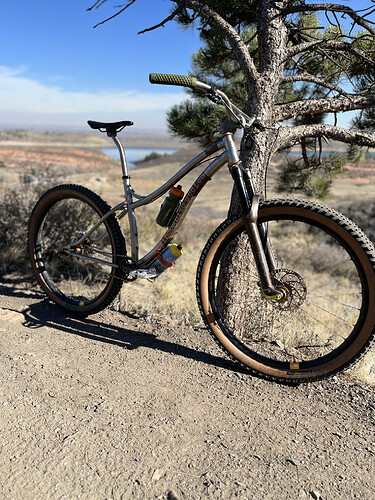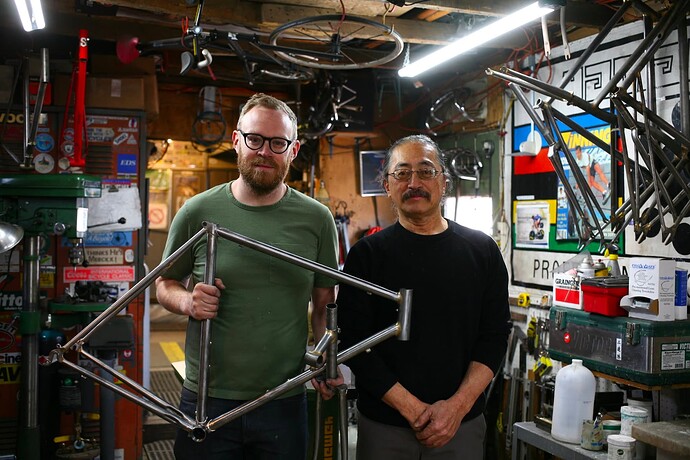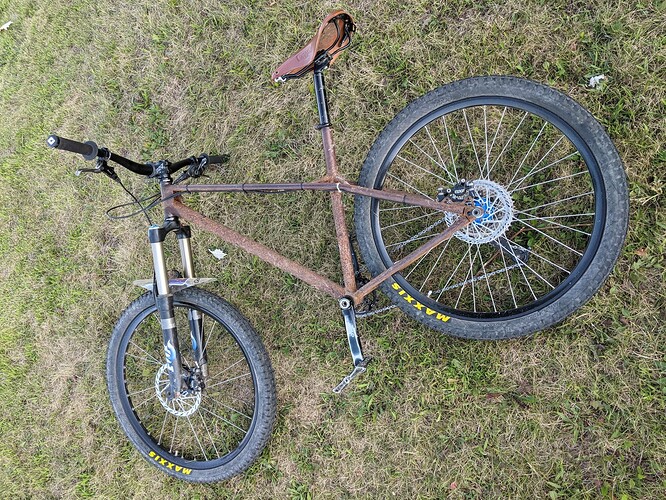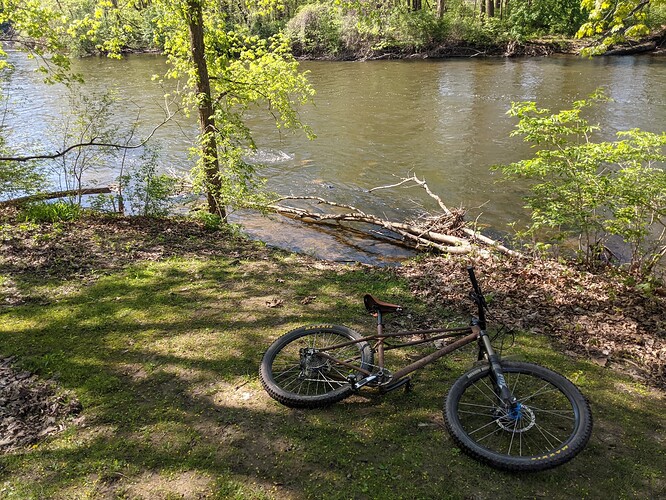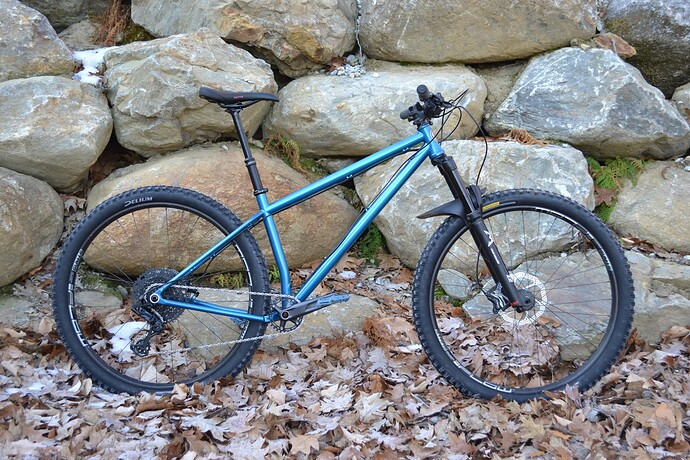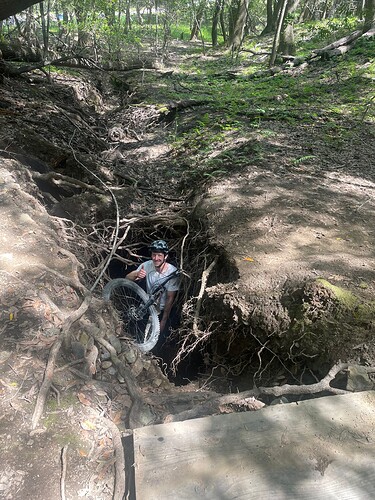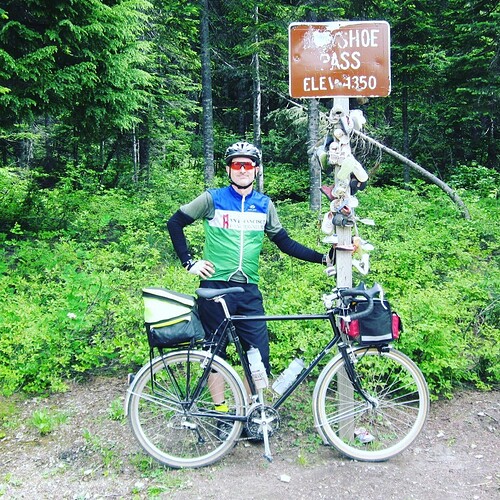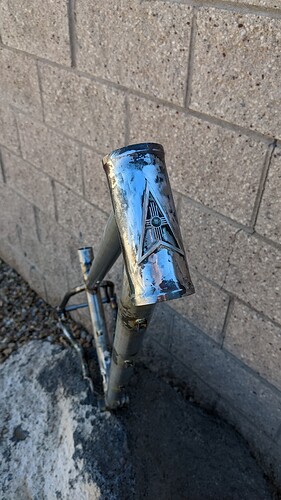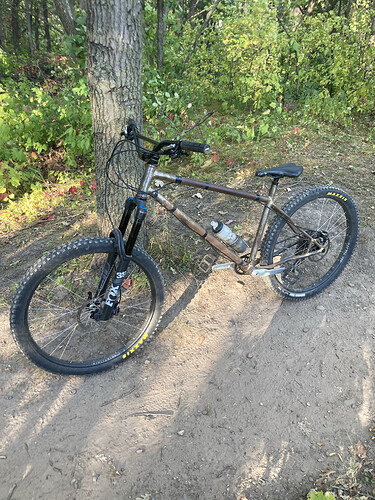My name is Nick Frost, and since learned how to build bikes frames from internet forums, I thought I’d share my autiodidactic approach to learning how to build bike frames. It’s been slow, difficult, wasteful, and expensive. I don’t recommend it. Aspirants to frame building should take a class instead. With that said, I read plenty of these same warnings before I started. My dad says, “you can tell Nick the stove is hot, but he’s still going to touch it and find out.”
I decided, with a sense of great urgency, that I was going to learn how to build a lugged frame in 2018. I am 6’9” (205cm) tall, and I was at the end of my twenties. I could feel that my body was getting to be too old to be riding small bikes, and the thought of scrimping and saving for one big, bland, custom all-road bike, or else going without riding, was simply unthinkable, so I began acquiring the tools and skills I’d need to make my own frame.
First, I spent months lurking on craigslist looking for oxy-acetylene tanks, and eventually found some huge, full tanks for fairly cheap, as well as a basic victor torch and regulator set to go with them. I bought some files, hacksaw blades, and some bronze, downloaded RattleCAD, and slowly learned how to miter and braze with scrap tubing from wrecked frames. It took me maybe three months before I had enough skill that I could justify buying silver, lugs, and tubes. If considering this route, I recommend buying fresh 4130 .049" DOM tubing, because getting the paint and oil off of wrecked frames sucks.
I spent some time brazing and cutting apart lugs, and then built a crooked fixed gear lugged frame and crooked fork to go with it. I had no fixture or reference surface, just a bench vise. I tried to use sting, true wheels, and I pinned the joints to get it as aligned as I could. It did not work well at all. I hadn’t yet learned how to keep my miters in phase and I lacked the skill to pull it off.
The front end alignment was comically bad, but I learned a lot and rode the bike for about a year before a crack developed in the top third of the downtube, probably due to the twist in the frame. After it broke, I quickly built the second one using an Alex Meade surface plate fixture I’d bought, and a piece of granite countertop I found on Craigslist for ten dollars. The alignment was much better, but I had used super light tubing, to see if I could, and I started denting the frame almost right away. I pressed the dents out with tube blocks and filled them with silver, but it eventually broke completely behind the top tube butt when I was bushwhacking and went OTB in an unseen ditch. I cut it apart for fillet brazing practice.
After that, I built myself one more lugged frame, this one with gears and disc brakes, and then I focused all my efforts on fillet brazing. Lugs are great, but I have only found one set of Llewellyn lugs that will work for someone my size. My goal was always to build a modern mountain bike. To do that, I needed the freedom of fillet brazing.
At this point, I was feeling good about myself and felt that I had been moving rather quickly along. I could braze a passable joint and make tight front-triangle miters with a file and templates, but as I tried, and failed to make the bikes that I wanted, I began to realize that success, as I was redefining it, was getting a lot harder to achieve and much more expensive. I had moved away from lugs and socketed dropouts so the frames I was trying to make were no longer self-fixturing. Making planar assembles was getting hard, and I was making a lot of mistakes. Along with being tall, I am also heavy and strong. I have always broken frames and components fairly regularly. I knew I had a small margin for error. I needed tight, accurate miters for the back end that I couldn’t do with bikeCAD templates and files. Also, the stay tubes I wanted did not exist.
I am the bread maker rather than the breadwinner of my house, so I was able to get a full-time job at the nearby azure bicycle tool company doing assembly, so I could get frame cutting tools cheaply and buy the other tools I needed as well. I’d been a bike mechanic and itinerant housepainter before this. I worked there for about two years and a built a complete professional bike shop in my basement. In that time, I also I bought a Cobra tube bender, 5/8”, and 7/8” dies, and a Hardinge horizontal mill with a Bridgeport M head on it. Slowly, I learned how to use these tools, while I bought more and more tools to go with them.
I still don’t have a proper frame fixture, but I have learned to work in sub-assemblies using a huge mill table, hold down set, and a sine bar and vernier protractor to set the angles of my Meade fixture. I have been reluctant to buy a fixture because the frames I am making are so long.
After grinding at it, and riding the simple singlespeeds I’d built, things finally came together for me this summer, when I finally swapped my mill’s motor, added a VFD, and wired my garage for 240v. I could finally run my horizontal mill, so bought a Farr miter fixture to use with it. The work paid off, and I soon after had the hardtail frame I’d wanted for so long.
I have ridden it hard, and built a second version with small improvements. I don’t intend to ever stop building, and may even sell one some day. I am lucky that because of my size and strength, the ends already justify the means and I feel no pressure to do so. I am currently working on an all-road bike.
Here is version one of my hard tail MTB. The wheels may look like 26, but are in fact 29. It is by far, the best bike I have ever ridden, which really isn’t saying much:
